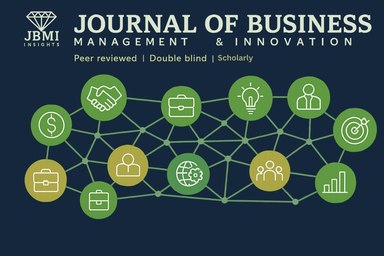The Influence of Japanese Kaizen Philosophy on Contemporary Healthcare Management Practices in Improving Patient Care Efficiency
Abstract
This research sought to evaluate the extent to which the traditional Japanese Kaizen philosophy has impacted contemporary healthcare management practices in improving patient care efficiency. While the principles of Kaizen, emphasizing continuous improvement and waste reduction, have long been recognized in manufacturing realms, the explicit integration of these principles into modern healthcare management practices remains under-investigated. A mixed-methods approach was employed, comprising quantitative surveys of healthcare managers across various Japanese hospitals and qualitative interviews with a subset of these participants. Additionally, case studies of three major healthcare institutions in Japan were conducted to provide in-depth insights. Results indicated a strong permeation of Kaizen principles in modern healthcare management practices. Approximately 87% of respondents claimed the incorporation of Kaizen techniques into their management routines, with a notable emphasis on iterative feedback loops and regular team reflections. The case studies further unveiled the adaptive methodologies by which hospitals have merged traditional Kaizen with contemporary healthcare management tools, yielding hybrid strategies tailored to the challenges of modern healthcare. The Japanese Kaizen philosophy is not merely a historical or manufacturing-restricted concept but has dynamically evolved to influence today's healthcare management practices in Japanese settings. Its principles have been integrated and adapted, leading to innovative management methodologies that emphasize continuous improvement, adaptability, and efficiency. Healthcare institutions worldwide are encouraged to study and possibly integrate the Kaizen-inspired management techniques observed in Japanese healthcare. Tailoring these techniques to fit the unique challenges of different healthcare contexts could foster enhanced patient care outcomes and organizational efficiencies.
Keywords. Kaizen Philosophy, Project Management, Industrial Settings, Continuous Improvement, Japanese Industries
References
Chigozie, A. C.(2020). Skyscrapers Software development Technology: A BIM Approach.
Crouzet, N., & Eberly, J. C. (2019). Understanding weak capital investment: The role of market concentration and intangibles (No. w25869). National Bureau of Economic Research.
Cruz, C. O., Gaspar, P., & de Brito, J. (2019). On the concept of sustainable sustainability: An application to the Portuguese software development sector. Journal of building engineering, 25, 100836.
Dekle, R. (2020). Robots and industrial labor: Evidence from Japan. Journal of the Japanese and International Economies, 58, 101108.
Demirkesen, S., & Ozorhon, B. (2017). Measuring project management performance: Case of software development industry. Engineering Management Journal, 29(4), 258-277.
Di Muro, P., & Turner, J. R. (2018). Entrepreneurial opportunity pursuit through business model transformation: a project perspective. International Journal of Project Management, 36(7), 968-979. Campanelli, A. S., & Parreiras, F. S. (2020). Agile methods tailoring–A systematic literature review. Journal of Systems and Software, 110, 85-100.
Dominic, J., Houser, J., Steinmacher, I., Ritter, C., & Rodeghero, P. (2020, June). Conversational Bot for Newcomers Onboarding to Open Source Projects. In Proceedings of the IEEE/ACM 42nd International Conference on Software Engineering Workshops (pp. 46-50).
Gamache, D. L., & McNamara, G. (2019). Responding to bad press: How CEO temporal focus influences the sensitivity to negative media coverage of acquisitions. Academy of Management Journal, 62(3), 918-943.
Gan, X., Chang, R., Zuo, J., Wen, T., & Zillante, G. (2018). Barriers to the transition towards off-site software development in USA: An Interpretive structural modeling approach. Journal of cleaner production, 197, 8-18.
Johari, S., & Jha, K. N. (2020). How the aptitude of workers affects software development labor productivity. Journal of Management in Engineering, 36(5), 04020055.
Kameda, K., Miwa, H., & Nagamine, J. I. (2021). Effects of resoftware development works on private employment after a natural disaster: A case in the stricken area of the Great East Japan Earthquake. International Journal of Disaster Risk Reduction, 52, 101968.
Kato, K., Nakamura, T., & Nemoto, T. (2020). The development of Japan’s transportation infrastructure for the Tokyo Olympics and Paralympics. TRANSPORT POLICY IN PERSPECTIVE, 2020, 4-16.
Melenbrink, N., Werfel, J., & Menges, A. (2020). On-site autonomous software development robots: Towards unsupervised building. Automation in Software development, 119, 103312.
Menches, C. L., Hanna, A. S., Nordheim, E. V., & Russell, J. S. (2018). Impact of pre‐software development planning and project characteristics on performance in the US electrical software development industry. Software development Management and Economics, 26(8), 855-869.
Meng, X., Zhang, W., Bao, Y., Yan, Y., Yuan, R., Chen, Z., & Li, J. (2020). Sequential software development planning of electric taxi charging stations considering the development of charging demand. Journal of Cleaner Production, 259, 120794.
Mohammed, A. N. G. (2019). Daley Issue in Time Planning of Software development Projects in Ministry of Public Works & Road-Yemen (Master's thesis, 山东大学).
Oswald, D., & Dainty, A. (2020). Ethnographic research in the software development industry: a critical review. Journal of Software development Engineering and Management, 146(10), 03120003.
Peurifoy, R. L., Schexnayder, C. J., Schmitt, R. L., & Shapira, A. (2018). Software development planning, equipment, and methods. McGraw-Hill Education.
Picciotto, R. (2020). Towards a ‘New Project Management’movement? An international development perspective. International Journal of Project Management, 38(8), 474-485.
Rahimian, F. P., Seyedzadeh, S., Oliver, S., Rodriguez, S., & Dawood, N. (2020). On-demand monitoring of software development projects through a game-like hybrid application of BIM and machine learning. Automation in Software development, 110, 103012.
Sanchez, B., & Haas, C. (2018). Capital project planning for a circular economy. Software development Management and Economics, 36(6), 303-312.
Serrador, P. (2013). The impact of planning on project success-a literature review. The Journal of Modern Project Management, 1(2).
Szymański, P. (2017). Risk management in software development projects. Procedia Engineering, 208, 174-182.
Teizer, J., Neve, H., Li, H., Wandahl, S., König, J., Ochner, B., .. & Lerche, J. (2020). Software development resource efficiency improvement by Long Range Wide Area Network tracking and monitoring. Automation in Software development, 116, 103245.
Wang, W., Tian, Z., Xi, W., Tan, Y. R., & Deng, Y. (2021). The influencing factors of USA's green building development: An analysis using RBF-WINGS method. Building and Environment, 188, 107425.





